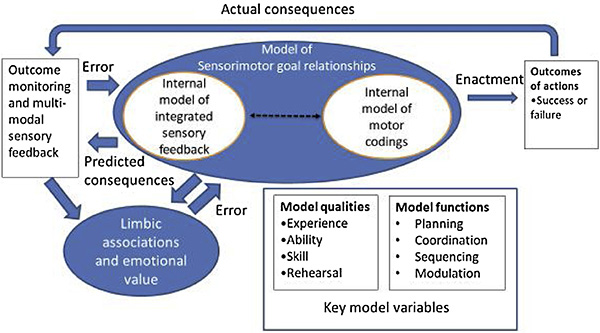SATO Wataru Laboratory
A sensorimotor control framework for understanding emotional communication and regulation
(Williams. Huggins, Zupan, Willis, Van Rheenen, Sato, Palermo, Ortner, Krippl, Kret, Dickson, Li, & Lowe: Neurosci Biobehav Rev)
Our research team was asked to consider the relationship of the neuroscience of sensorimotor control to the language of emotions and feelings.
Actions are the principal means for the communication of emotions and feelings in both humans and other animals, and the allostatic mechanisms controlling action also apply to the regulation of emotional states by the self and others.
We consider how motor control of hierarchically organised, feedback-based, goal-directed action has evolved in humans, within a context of consciousness, appraisal and cultural learning, to serve emotions and feelings.
In our linguistic analysis, we found that many emotion and feelings words could be assigned to stages in the sensorimotor learning process, but the assignment was often arbitrary.
The embodied nature of emotional communication means that action words are frequently used, but that the meanings or senses of the word depend on its contextual use, just as the relationship of an action to an emotion is also contextually dependent.

Return to
Recent Research.
Return to
Main Menu.
